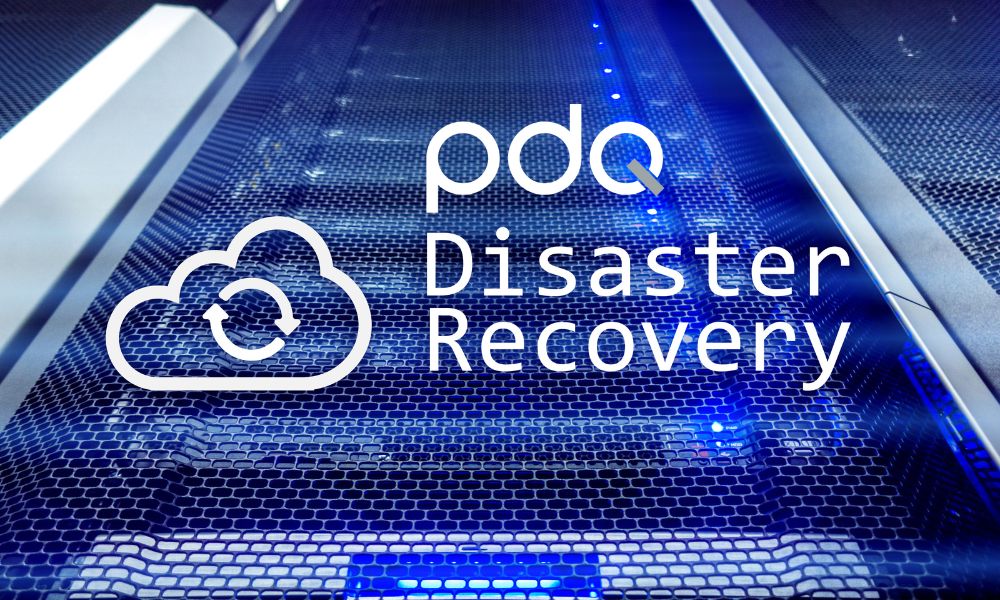Protect Your Business from Downtime and Data Loss with a Robust Disaster Recovery Plan
In today’s fast-paced digital world, every second counts, and an unexpected disaster could put your entire business at risk.
Building resilience against unforeseen disruptions is not just important—it’s essential for survival and continued success.
Downtime, data loss, and operational disruptions can all lead to significant financial setbacks and loss of reputation. Having a well-designed IT disaster recovery plan (DRP) in place is not just a luxury but a necessity. Here, we’ll discuss everything you need to know about disaster recovery, why it matters, and how to create a robust plan that safeguards your business.
What is Disaster Recovery?
IT disaster recovery is a strategic approach to ensure that critical business functions can continue or be restored swiftly following an incident. Incidents can range from cyberattacks to natural disasters or hardware failures. The aim is to minimise downtime, secure vital data, and enable a seamless return to normal operations, giving you peace of mind that your business is protected.
Whether your business is small or a large enterprise, having a well-thought-out disaster recovery plan means your operations are resilient against disruptions that could otherwise have catastrophic effects.

Key Components of a Solid Disaster Recovery Plan
To create a disaster recovery plan that works, it’s important to focus on a few core components that cover everything from prevention to recovery. Here are the essential elements you need to consider:
- Identify Risks
The first step in creating a disaster recovery plan is identifying the risks to your business operations. Risks can come in various forms, such as:
- Hardware failures
- Power outages
- Cybersecurity threats
- Natural disasters (e.g., floods, earthquakes)
- Human error
Understanding what could go wrong helps you prepare adequately. This step allows you to assess the probability of specific events and their potential impact, providing a clear direction for the rest of your plan.
- Regular Data Backups
Data is the lifeline of any modern business. Regular data back-ups are a fundamental aspect of any IT disaster recovery plan:
- Frequency: Ensure your backups are performed regularly—ideally in real time or at least daily.
- Location: Store backups securely in multiple locations, including both on-site and in the cloud.
- Encryption: Always encrypt your backups to prevent data breaches.
Having reliable backups in place means that in case of a data loss incident, you can restore data quickly and continue operating without significant disruptions.
- Redundant Systems
Redundancy is key to ensuring that your systems stay functional even when something fails. By setting up redundant systems, you create a safety net that kicks in if the primary systems go down.
- Mirrored Systems: Backup systems can mirror your main IT infrastructure, automatically taking over when the primary system fails.
- Reduced Downtime: Redundancy significantly reduces downtime, ensuring continuity of service for customers and stakeholders.
- Regular Testing and Drills
A plan is only effective if it works during an emergency. Conduct regular testing and drills to ensure that your IT disaster recovery plan is functional and covers all aspects of your operations.
- Identify Weaknesses: Testing can reveal gaps or vulnerabilities that you may not have initially considered.
- Team Preparation: Drills ensure that everyone on your team knows their role and is prepared to act effectively during an incident.
- Clear Documentation
Clear, accessible documentation is crucial to a successful disaster recovery plan.
- Roles and Responsibilities: Ensure that everyone knows what they need to do during recovery efforts.
- Procedures: Document step-by-step instructions on restoring data, switching to redundant systems, and more.
Clear documentation not only helps reduce chaos during recovery but also empowers employees to respond confidently and effectively.
- Continuous Improvement
Technology and risks are constantly evolving, which means your IT disaster recovery plan should evolve too. Regular reviews and updates are essential.
- Monitor Emerging Risks: Keep an eye on new cyber threats, hardware vulnerabilities, and environmental changes.
- Feedback Loop: Incorporate feedback from past incidents or test drills to strengthen your plan.
Continuous improvement helps ensure that your IT disaster recovery plan remains relevant and effective, providing ongoing protection for your business.
Benefits of an IT Disaster Recovery Plan
Having a robust IT disaster recovery plan offers multiple benefits for your business:
- Minimise Downtime: A well-prepared plan ensures that your business can quickly resume operations, minimising costly downtime.
- Protect Data and Reputation: Ensuring that data is backed up and secure helps protect your company’s reputation and customer trust.
- Cost Savings: Recovering from a disaster without a plan can be incredibly costly, involving extended downtime, data recovery fees, and potentially lost business opportunities.
- Meet Compliance Requirements: Many industries require an IT disaster recovery plan to meet regulatory compliance standards.
Getting Started with PDQ Disaster Recovery

PDQ is committed to helping businesses stay secure and prepared for any eventuality. We begin by working closely with you to assess the risks specific to your business, building an IT disaster recovery plan that’s tailored to your needs.
Our process includes:
- Risk Assessment: Identifying potential vulnerabilities and threats.
- Backup Solutions: Providing secure, regular data backups, both on-site and in the cloud.
- Redundancy Setup: Ensuring your IT systems have adequate back-up infrastructure to avoid service interruptions.
- Regular Testing: Conducting frequent drills to ensure your team is prepared for any scenario.
- Continuous Improvement: Reviewing and updating your plan regularly to stay ahead of emerging risks.
With over 25 years of experience offering IT Support services, PDQ is here to help you navigate the complexities of IT disaster recovery. We believe in providing best-in-class solutions to minimise risks and keep your business running smoothly.
Ready to Protect Your Business?
Disasters are unpredictable, but the impact they have on your business doesn’t have to be. By implementing a robust IT disaster recovery plan, you can rest assured that your operations will withstand challenges, and your data will remain safe.
Get in touch with PDQ today to learn how we can help you safeguard your business against any disaster. Together, we can build a more resilient future for your company.


